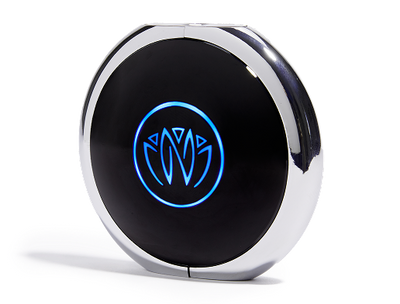It’s time we start taking our health and wellbeing into our own hands. To do so, we must become informed about all of the inner workings of our bodies. For instance, did you know that we have 12 cranial nerves? Their functions are usually categorized as being either sensory or motor. Sensory nerves are involved with your senses, such as smell, hearing, and touch. Motor nerves control the movement and function of muscles or glands. They control everything from your facial expression to digestion.
Perhaps the most important of all the cranial nerves is the vagus nerve. According to Jolene Hart, CHC, it is “The most subtly powerful part of your body that you’ve never heard of. Nicknamed the ‘wandering nerve,’ it originates in your brain stem and extends through your ears, tongue, heart, lungs, stomach, intestines, kidneys, liver, pancreas, and sex organs— among other organs— connecting them and creating a body-wide network of influence (the nerve splits as it descends through the body, enabling its extensive reach).”
Many have found that by, “activating the vagus nerve through the parasympathetic nervous system, we can greatly influence inflammation and the immune system”
The vagus nerve is a part of your parasympathetic nervous system and specifically targets rest and digest. Hart also states that this, “promotes calm, hormone balance, positive mood, anti-inflammatory effects, immunity, and benefits to so many wide-ranging aspects of your health.” 90% of vagus nerve fibers send signals up to the brain from the digestive tract. And 10% of its fibers send brain signals to your gut relating to the secretion of stomach acid and enzymes. It’s an accurate illustration of the gut-brain axis communication!
The International Alliance of Healthcare Educators (IAHE) recommends these six ways to stimulate or “hack” your vagus nerve.
- Slow, rhythmic, diaphragmatic breathing. Breathing from your diaphragm, rather than shallowly from the top of the lungs stimulates and tones the vagus nerve.
- Humming. Since the vagus nerve is connected to the vocal cords, humming mechanically stimulates it. You can hum a song, or even better repeat the sound ‘OM.’
- Speaking. Similarly speaking is helpful for vagal tone, due to the connection to the vocal cords.
- Washing your face with cold water. The mechanism here is not known, but cold water on your face stimulates the vagus nerve.
- Meditation, especially loving-kindness meditation which promotes feelings of goodwill towards yourself and others. A 2010 study by Barbara Fredrickson and Bethany Kik found that increasing positive emotions led to increased social closeness, and an improvement in vagal tone.
- Balancing the gut microbiome. The presence of healthy bacteria in the gut creates a positive feedback loop through the vagus nerve, increasing its tone.
The implications of such simple and basic practices on your overall health, and in particular on inflammation are far-reaching. If you suffer from an inflammatory condition, digestive upset, high blood pressure or depression, a closer look at vagal tone is highly recommended.




